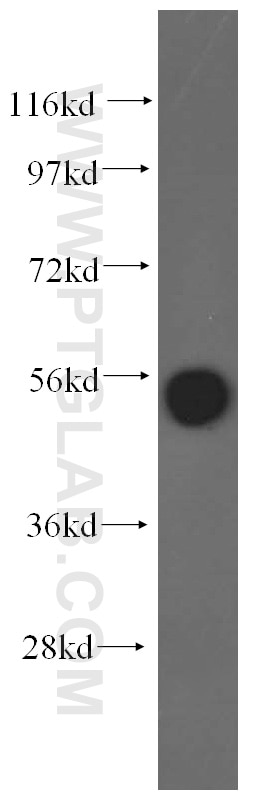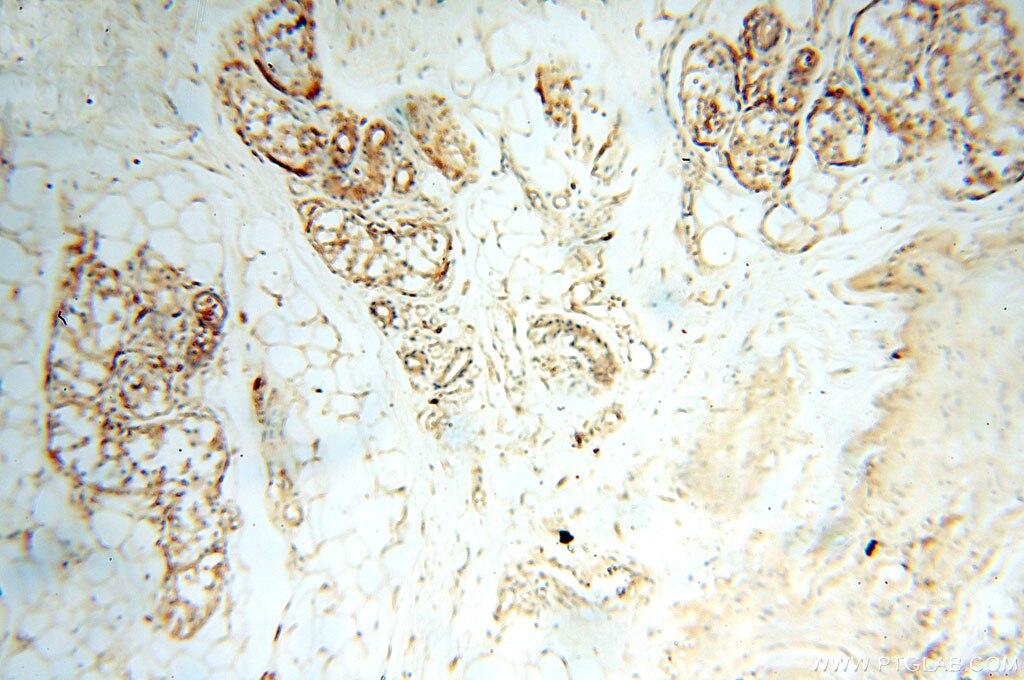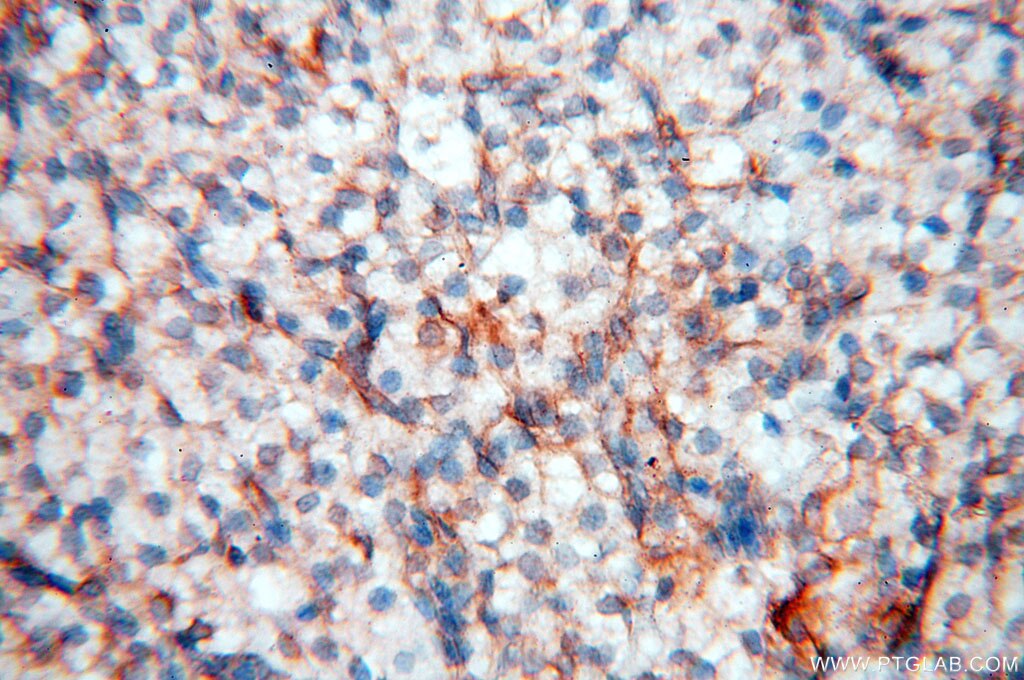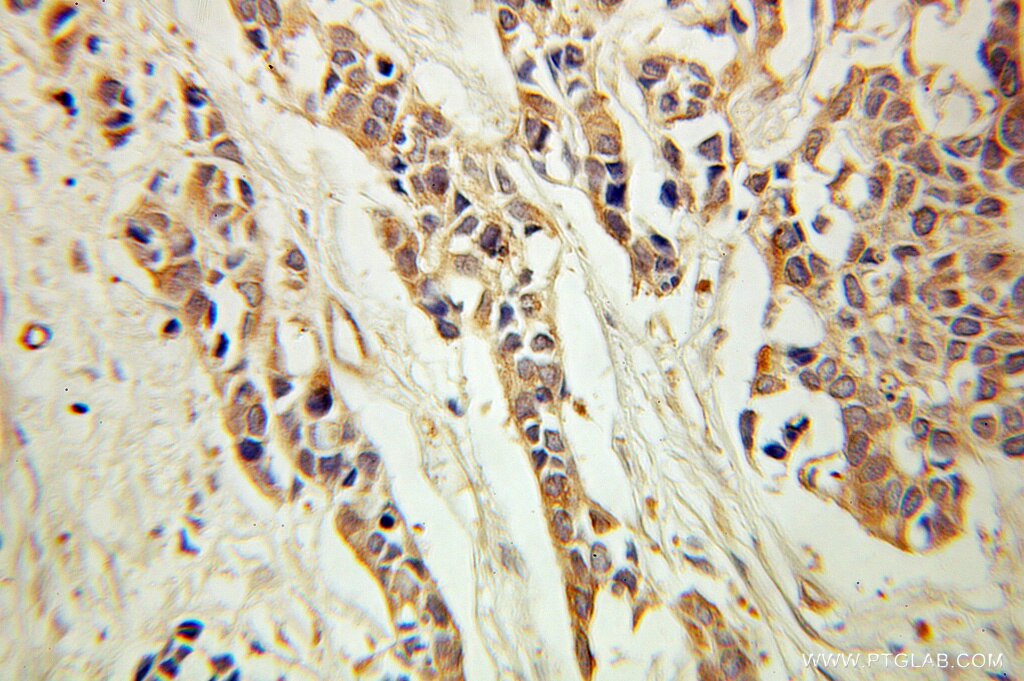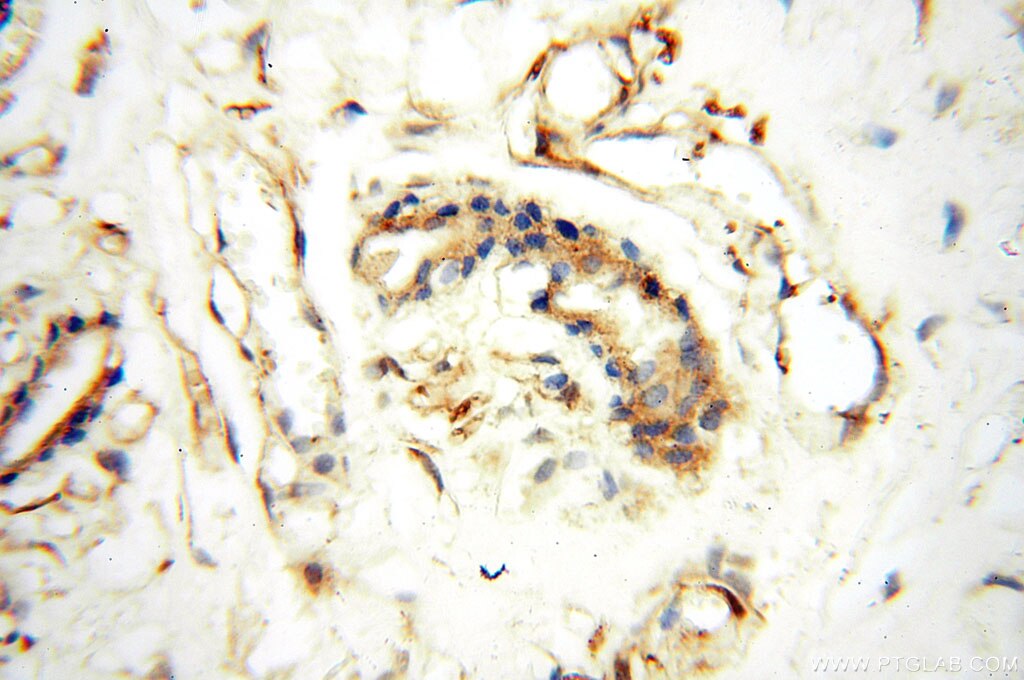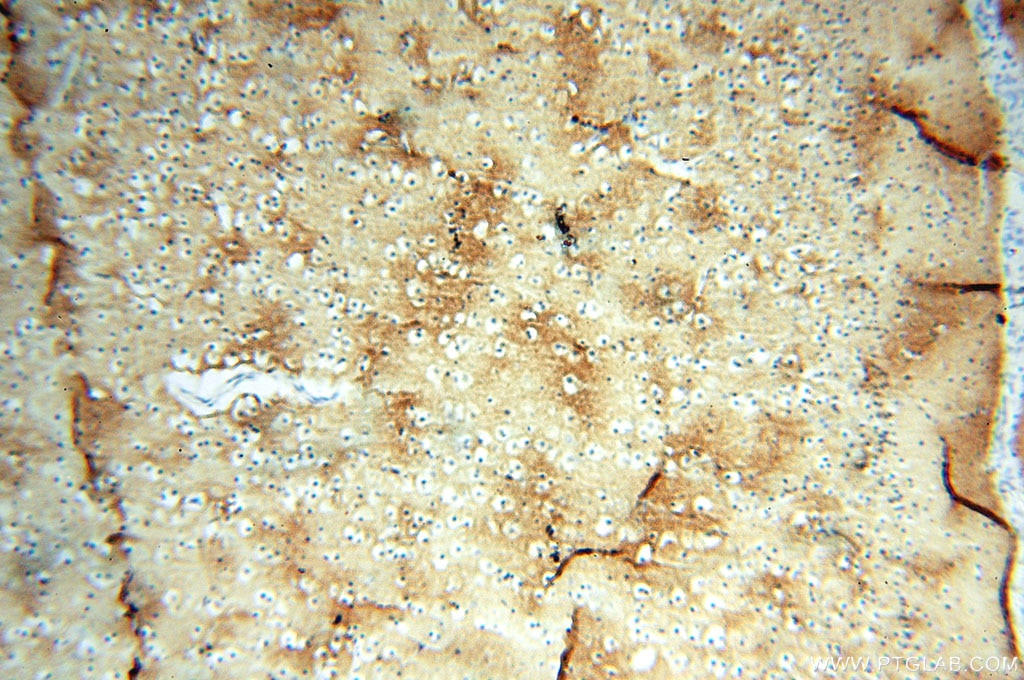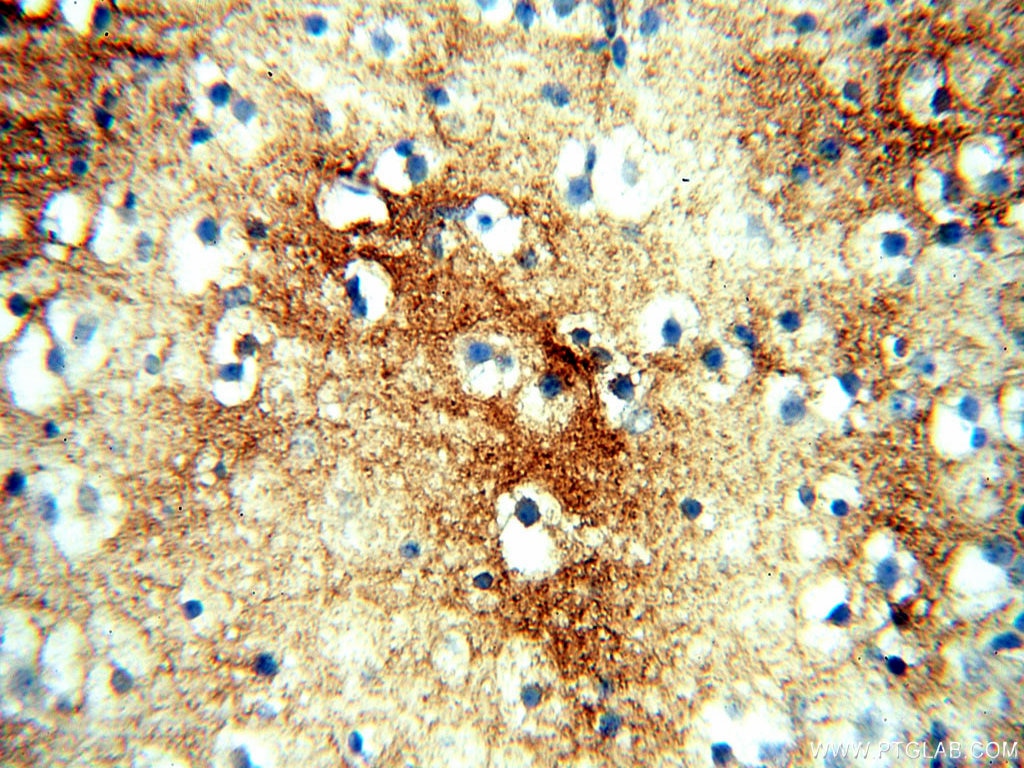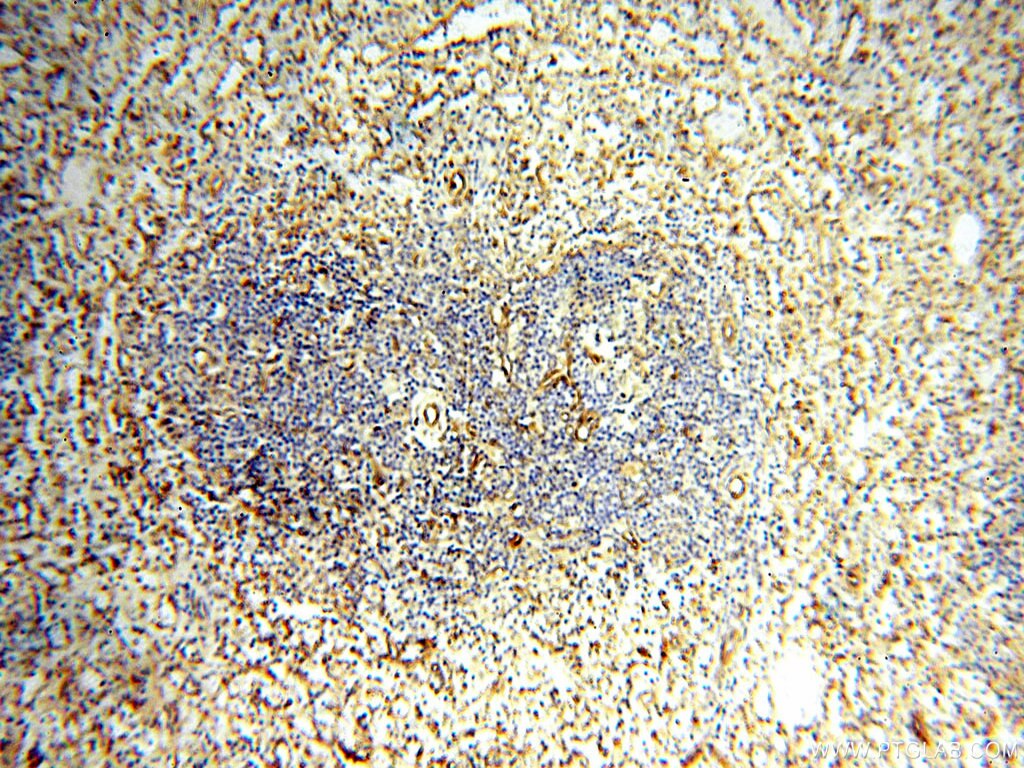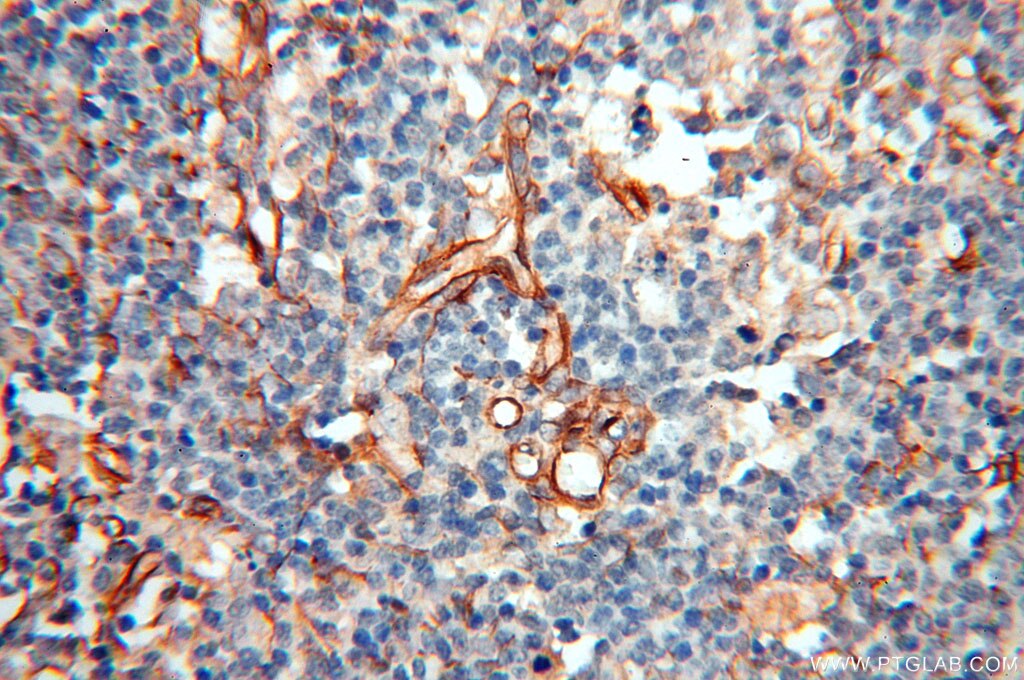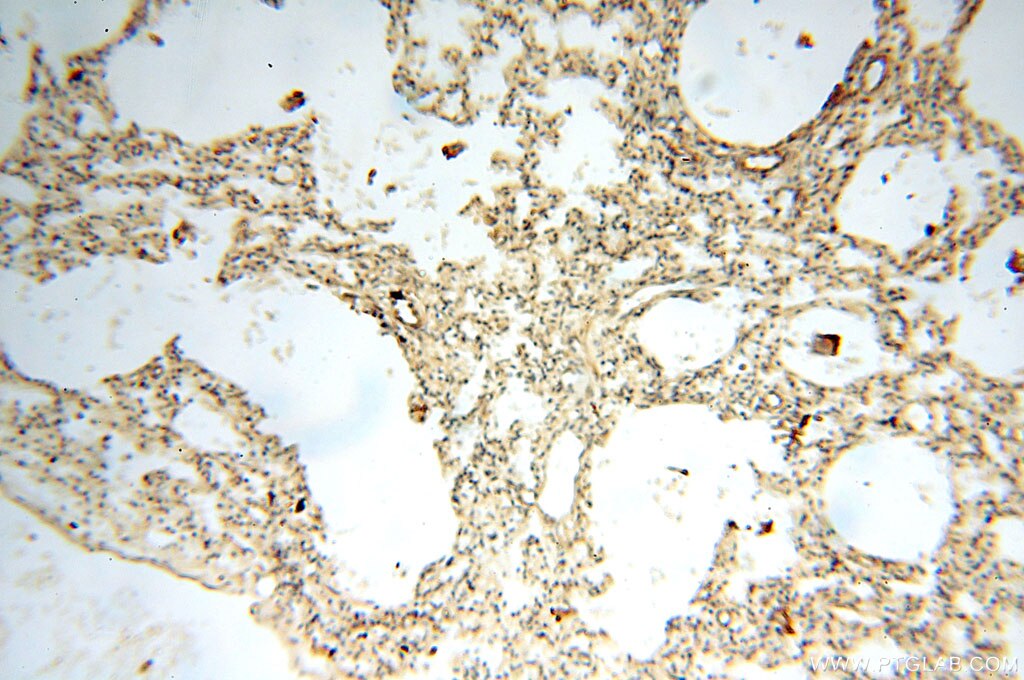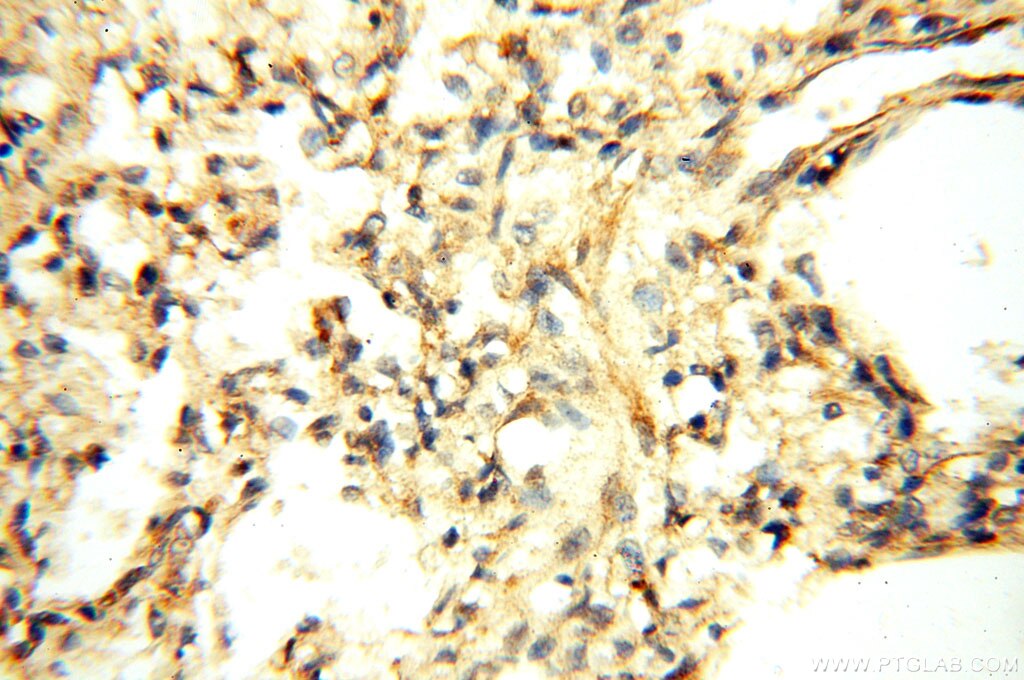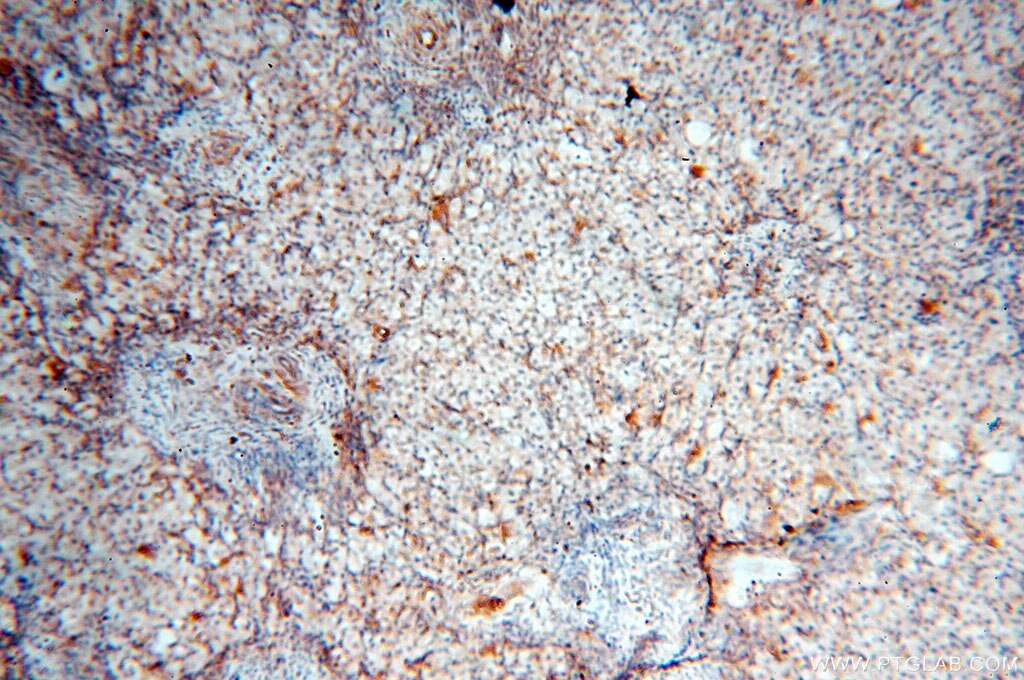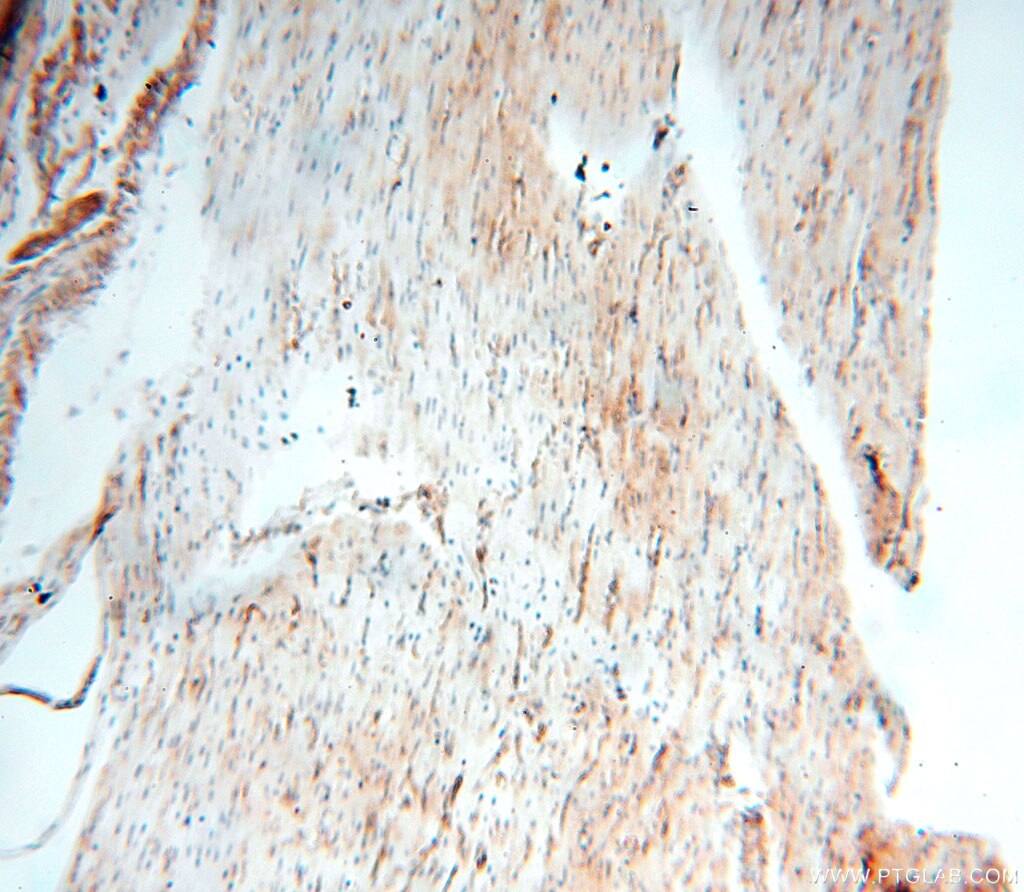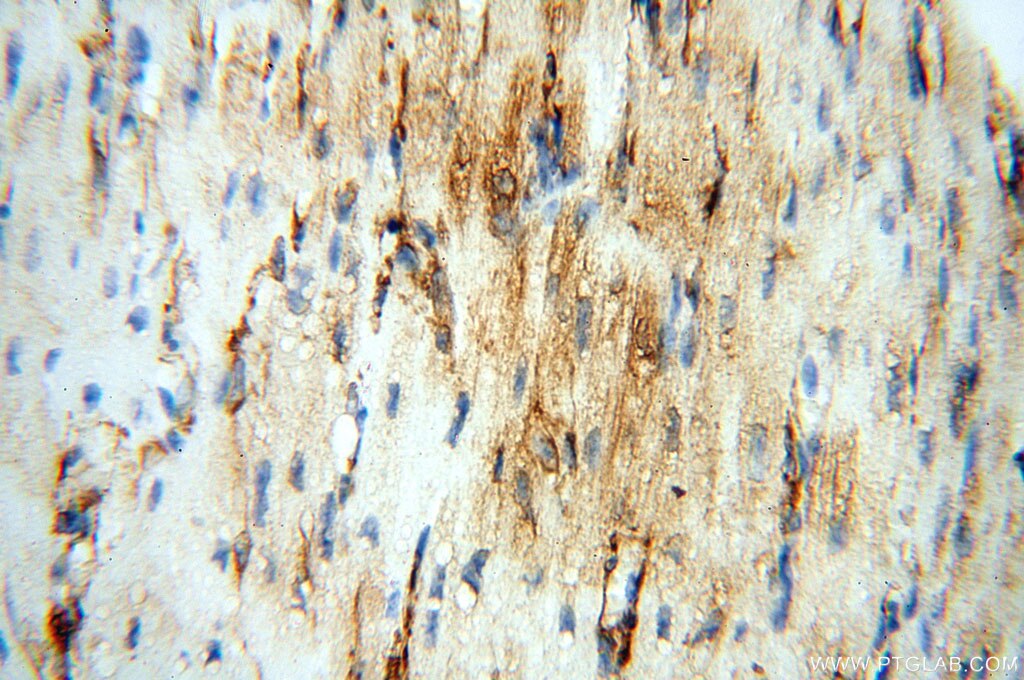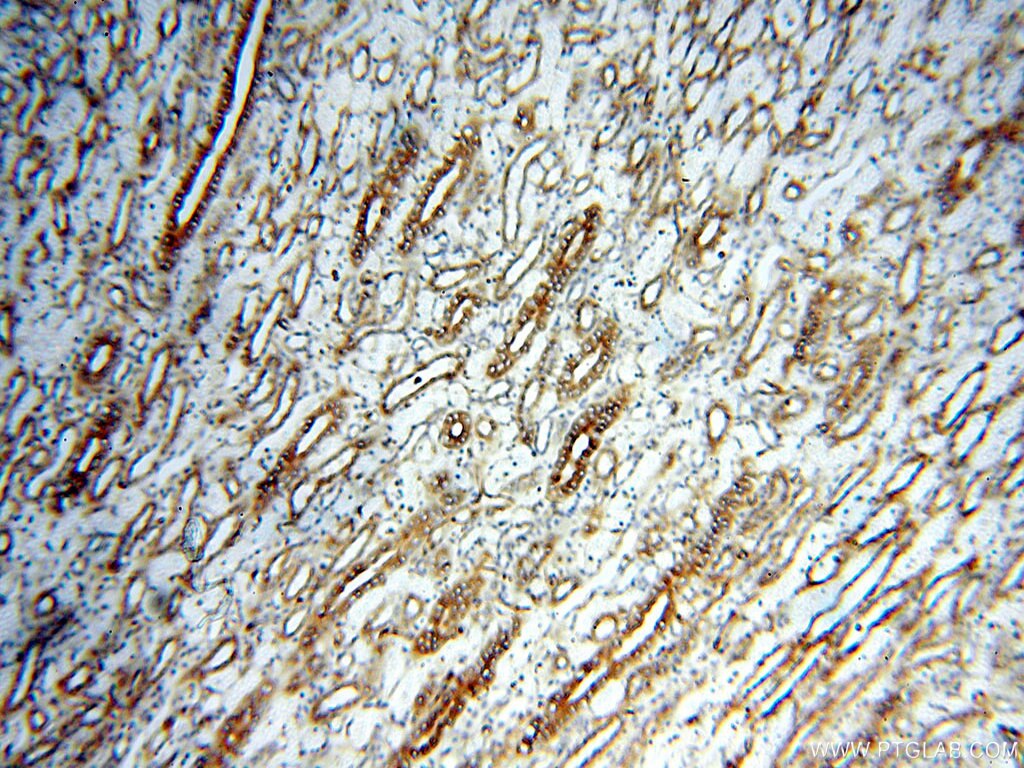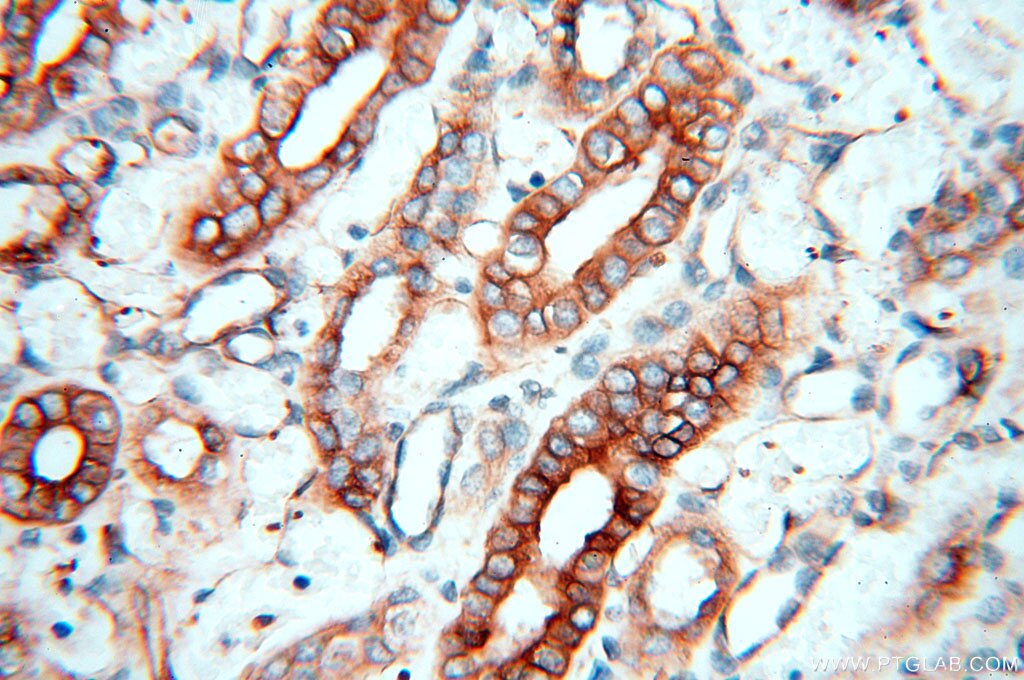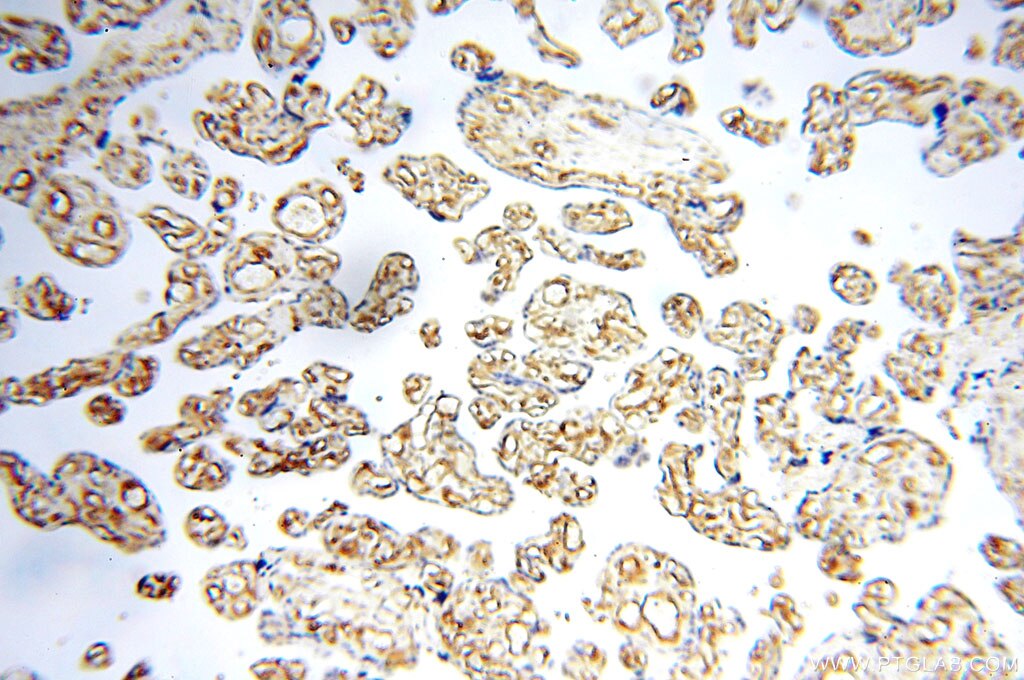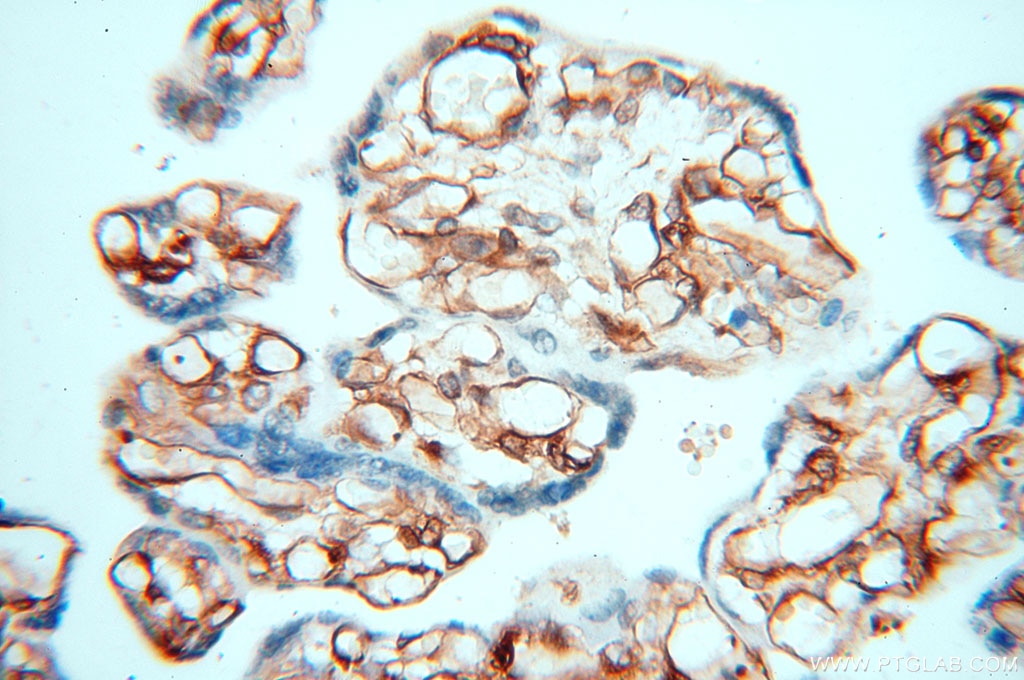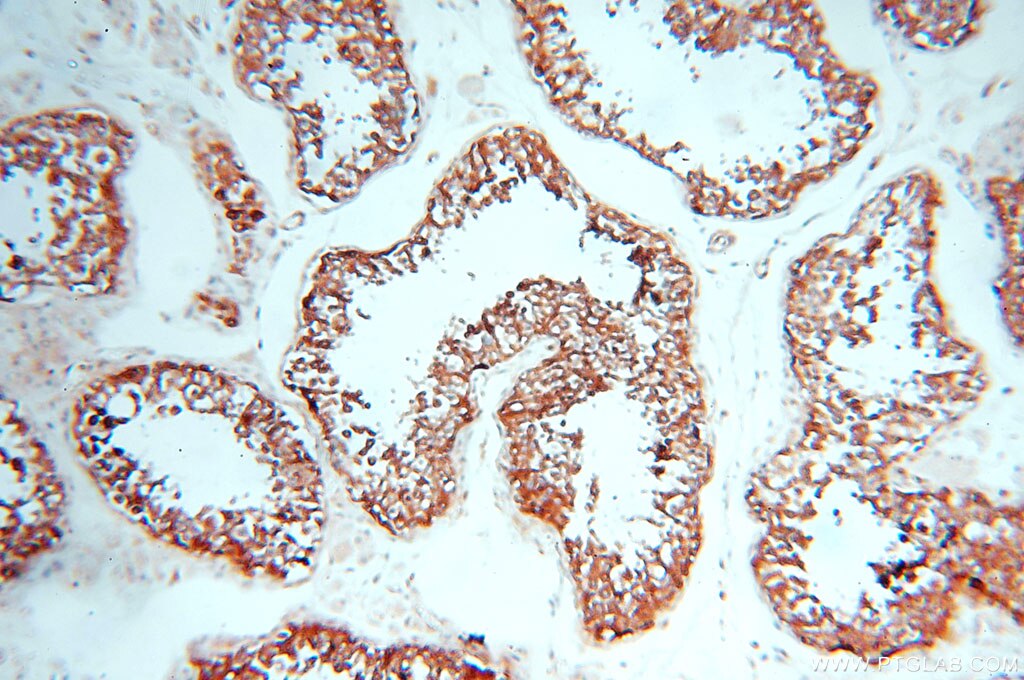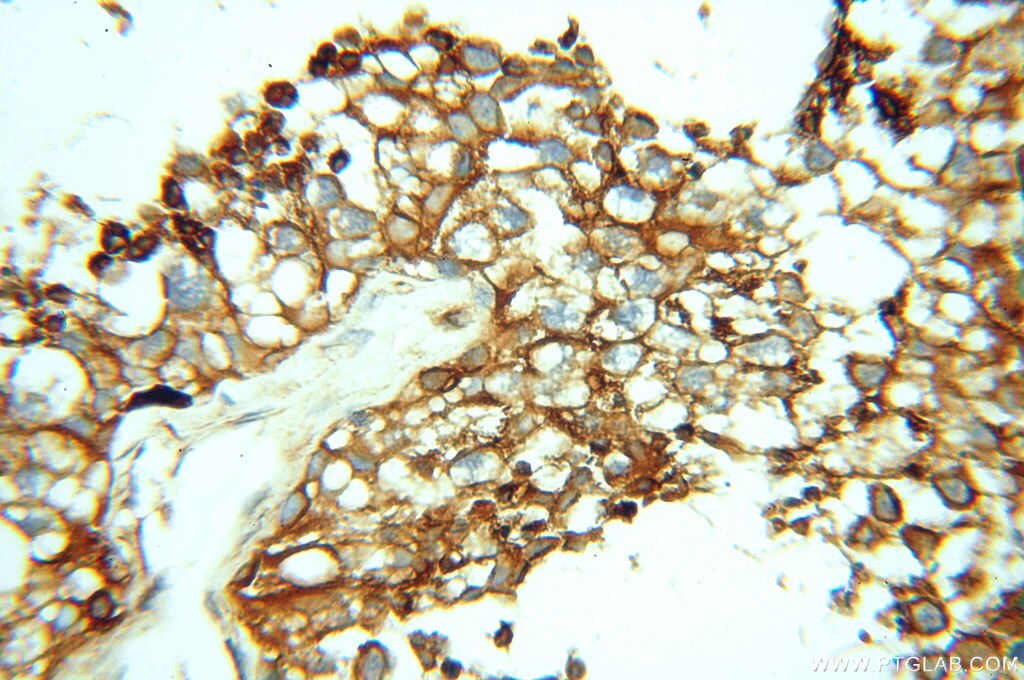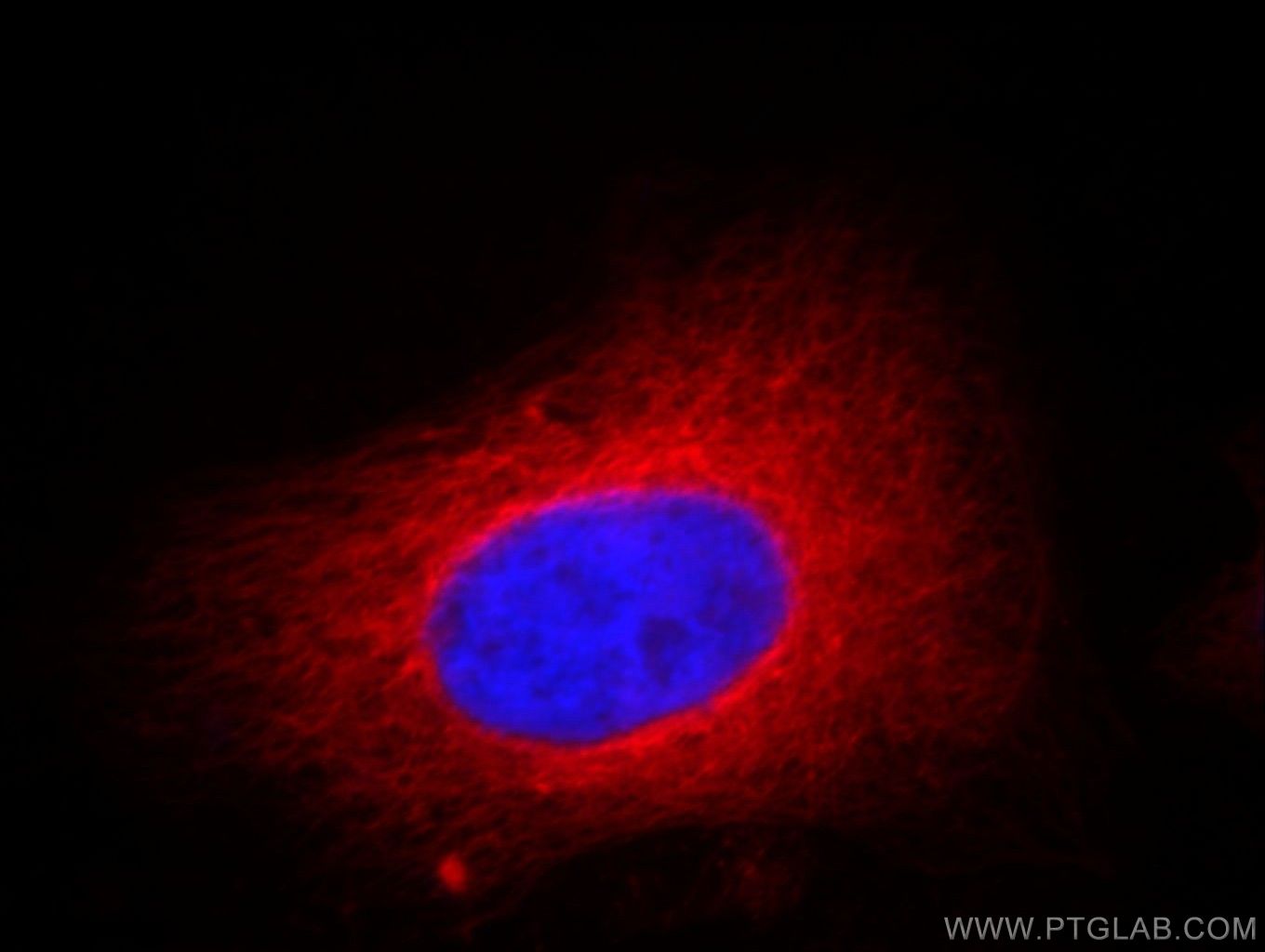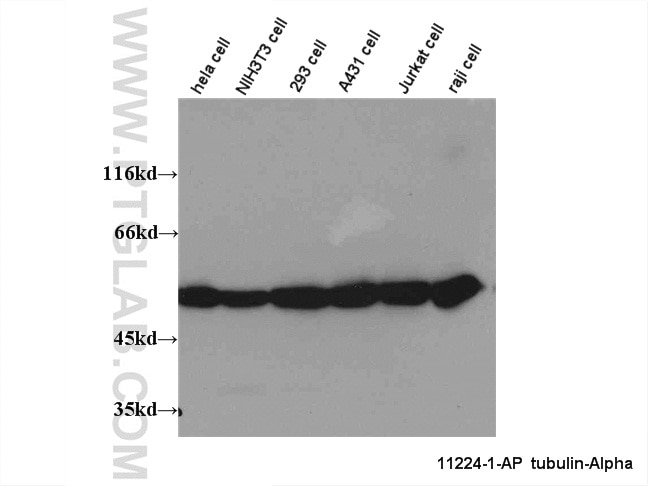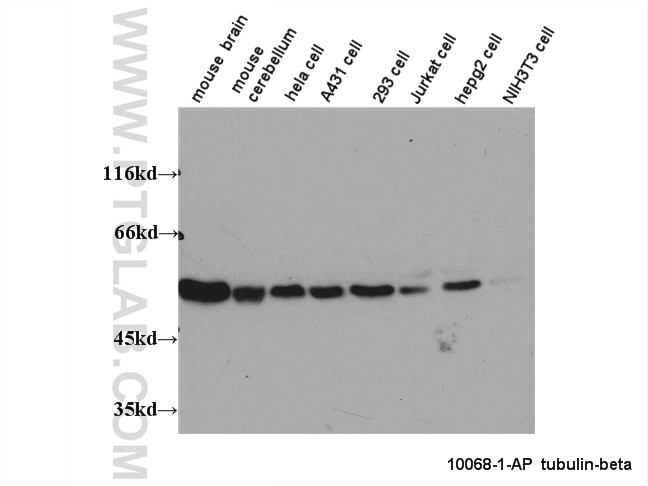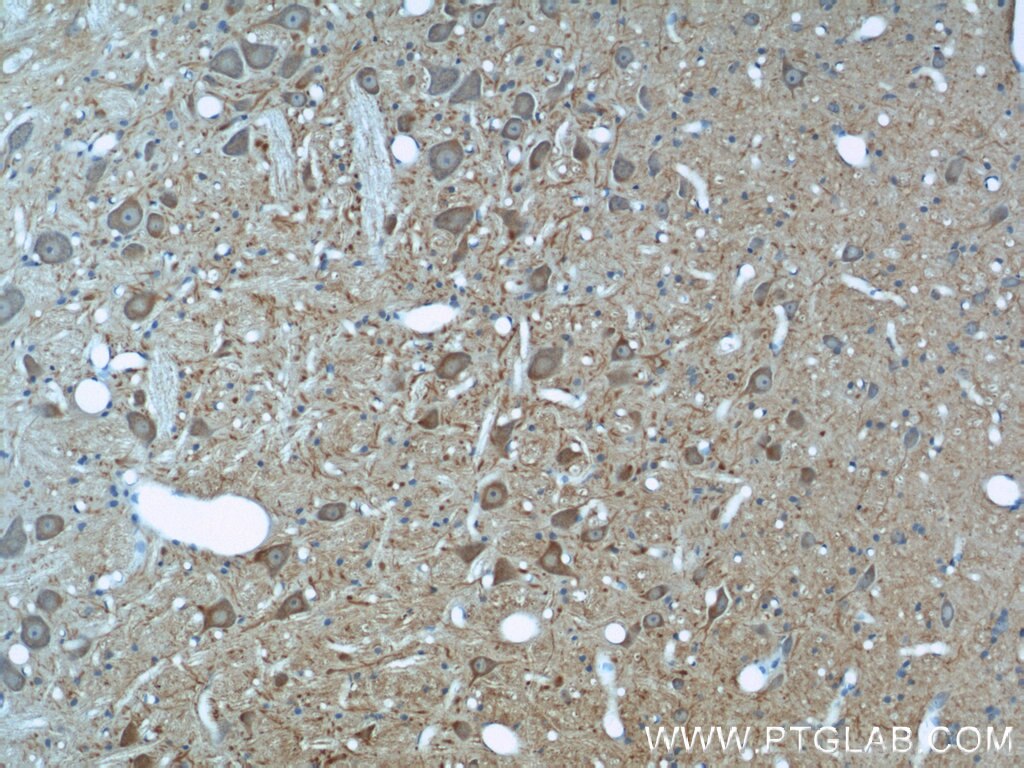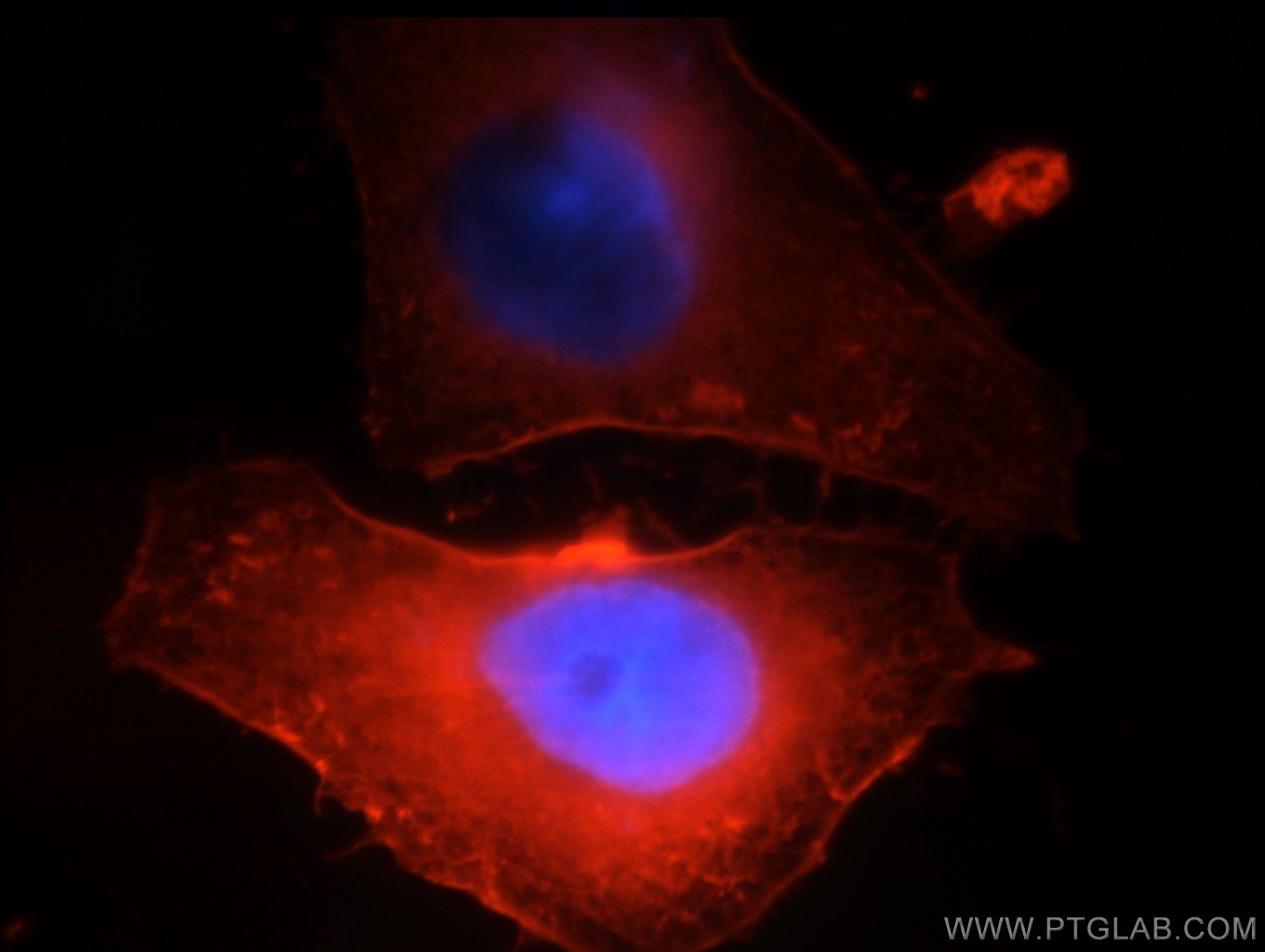alpha Tubulin Polyklonaler Antikörper
alpha Tubulin Polyklonal Antikörper für ELISA
Wirt / Isotyp
Kaninchen / IgG
Getestete Reaktivität
human, Maus, Ratte
Anwendung
WB, CoIP, ELISA
Konjugation
Unkonjugiert
Kat-Nr. : 10759-1-AP
Synonyme
Galerie der Validierungsdaten
Geprüfte Anwendungen
Veröffentlichte Anwendungen
| WB | See 3 publications below |
| CoIP | See 1 publications below |
Produktinformation
10759-1-AP bindet in WB, CoIP, ELISA alpha Tubulin und zeigt Reaktivität mit human, Maus, Ratten
| Getestete Reaktivität | human, Maus, Ratte |
| In Publikationen genannte Reaktivität | human, Maus |
| Wirt / Isotyp | Kaninchen / IgG |
| Klonalität | Polyklonal |
| Typ | Antikörper |
| Immunogen | alpha Tubulin fusion protein Ag1181 |
| Vollständiger Name | tubulin, alpha 4a |
| Berechnetes Molekulargewicht | 55 kDa |
| GenBank-Zugangsnummer | BC009238 |
| Gene symbol | Alpha Tubulin |
| Gene ID (NCBI) | 7277 |
| Konjugation | Unkonjugiert |
| Form | Liquid |
| Reinigungsmethode | Antigen-Affinitätsreinigung |
| Lagerungspuffer | PBS mit 0.02% Natriumazid und 50% Glycerin pH 7.3. |
| Lagerungsbedingungen | Bei -20°C lagern. Nach dem Versand ein Jahr lang stabil Aliquotieren ist bei -20oC Lagerung nicht notwendig. 20ul Größen enthalten 0,1% BSA. |
Hintergrundinformationen
There are five tubulins in human cells. They form heterodimers, which multimerize to form a microtubule filament. An alpha and beta tubulin heterodimer is the basic structural unit of microtubules. The heterodimer does not come apart, once formed. The alpha and beta tubulins, which are each about 55 kDa MW, are homologous but not identical.
Publikationen
| Species | Application | Title |
|---|---|---|
Biol Psychiatry Molecular networks of DYX1C1 gene show connection to neuronal migration genes and cytoskeletal proteins. | ||
Sci Rep CFTR-regulated MAPK/NF-κB signaling in pulmonary inflammation in thermal inhalation injury. | ||
Cell Physiol Biochem Epidermal CFTR Suppresses MAPK/NF-κB to Promote Cutaneous Wound Healing. | ||
Biomed Pharmacother Cistanche deserticola polysaccharides protects PC12 cells against OGD/RP-induced injury. | ||
